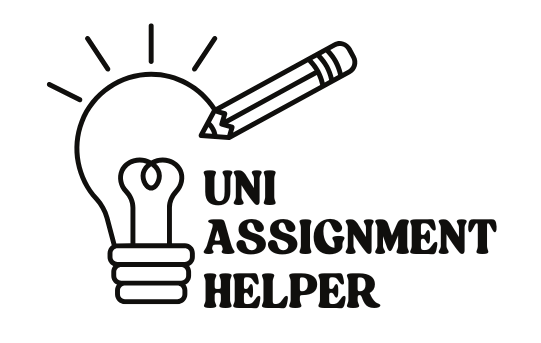UK Experts Explain Michael Argyle Communication Cycle

If you’re a university student in the UK studying health, social care or communication, you’ve come across Michael Argyle’s Communication Cycle in your lectures or lecture notes. You may nod as your lecturer discusses ideas, encoding, and feedback, but when you come to write about what is Argyle’s communication cycle in your assignemnt, everything becomes blur. You know communication happens in real life, however, putting it in academic language, creating links to theory and real-world examples, and writing it in a clear and crisp way to gain marks is a challenge.
This is where Uni Assignment Helper comes in. While many students struggle to unpack the six stages of Argyle’s cycle, our assignment help experts provide clarity, structure, and fresh examples. Whether you need assignment writing help, want to buy assignment online UK, or simply ask “help me with assignment”, our team ensures you’re not just handed an answer, but guided into real understanding.
In this article, we’ll break down the concept, explore comparisons, and show exactly how you can leverage this theory to impress markers. Read on, and dive into communication theory with confidence.
What Is Michael Argyle’s Communication Cycle?
To begin with, Michael Argyle’s Communication Cycle describes how communication works in a loop, rather than a one-way process. He believes that communication is not simply sending a message and hoping it is received, but rather a cycle involving several steps, including encoding, decoding, and feedback. Here are the six stages of Argyle’s theory (some of these may be paraphrased depending on the source):
- Idea occurs / formation – when a sender has a thought or intends to communicate something.
- Message coded / encoding – when the sender translates that thought into words, symbols, gestures, or other media.
- Message sent / transmission – The encoded message is sent through means (spoken, written, body language, digital medium).
- Message received / reception – when the recipient receives or takes in the message ( hearing, reading, or observing).
- Message decoded / interpretation – when the receiver decodes or interprets what was sent.
- Message understood / feedback – when the receiver indicates they understand the content (or do not understand) in return to the sender, the feedback can be either verbal or non-verbal.
Real-life example:
Imagine a doctor explaining a new diagnosis to a patient.
- The doctor forms an idea: “I need to explain the condition clearly and reassuringly.”
- The doctor encodes: Uses simple medical terminology, hand drawings, or hand gestures.
- The doctor transmits: In-person conversation, a paper information leaflet, or showing a chart.
- The patient receives: With their ears, they hear the words, and with their eyes, they perceive the hand gestures or other visual aid.
- The patient decodes: Decodes based on their prior knowledge, current emotional state, and language ability.
- The patient understands/ gives feedback: Asks a clarifying question, nods their head, and expresses worry or relief.
By walking through these six stages, the communication loop is closed, and the doctor can tell whether the patient needs further explanation or not. Our assignment help experts at Uni Assignment Helper often translate this into assignment-friendly language, with relevant UK university examples, so your essays don’t get stuck at the theory layer.
Who Created the Argyle Communication Cycle and Why It Matters
You may ask: Who was Michael Argyle, and why is his communication cycle still so central?
Michael Argyle (1925-2002) was a leading British social psychologist, with his research predominantly focused on social interaction, non-verbal communication and social skills. His contributions have impacted not just psychology but also communication studies and the health/social care disciplines.
It should be noted that Argyle was not the first to propose a communication cycle, credit goes to the earlier work of Charles Berner in the 1960s. What Argyle added was a focus on feedback, mutual understanding, and non-verbal aspects of communication in everyday interactions.
Why does this matter for UK students? In health and social care courses, communication theory underpins many assignments, i.e. care plans, nursing or social work scenarios, across the courses. Argyle’s model forms a theoretical backbone many tutors expect you to apply. Understanding argyle’s theory of communication gives you solid footing when tackling those tasks.
At Uni Assignment Helper, we ensure this historical grounding is to be understood as clarity, when you receive bespoke assignment support from assignment experts, they not only explain who developed the cycle but why it still matters in modern UK contexts.
Exploring Argyle’s Main Areas of Research
To understand the importance of the communication cycle, it is useful to understand what Argyle’s interests lay and how those things relate back to both theory and practice.
Nonverbal Communication & Social Signal Processing
Argyle strongly believed that meaning is transmitted more through nonverbal communication than verbal communication. Nonverbal communication includes body language, facial expressions, eye contact, posture, and tone; even if you think you are using words to communicate, it’s the nonverbal cues that matter! He believed that decoding the signals is just as important as understanding the word.
Social Interaction and Interpersonal Skills
He saw communication as a skill which could be learned, advanced through practice and refinement. Many of the social skills (such as listening, turn-taking, and feedback) were seen as major components of his work.
Context and Situational Factors
Argyle also recognised that context, environment, cultural norms, emotional state, influences how message encoding or decoding succeeds or fails. Noise (literal or psychological) can distort meaning.
For many students, the challenge is connecting all of this theoretical detail back with real practice. This is what we provide in our assignment writing help service, include worked examples to illustrate the importance of non-verbal cues, feedback, and context in real instances in UK hospital wards, counselling or care settings, all formatted to the UK assessment marking criteria.
Understanding Argyle’s Theory of the Communication Cycle
Now that we have looked a little deeper into why Argyle’s model is distinctive and so useful, let’s talk about ways to refer to it in your assignments.
The Cycle, Not a One-Way Route
In contrast with linear models (sender to receiver) Argyle highlighted that communication is cyclical and a two-way transaction. Feedback loops are critical: communication is live, reactive and evolving.
Active Feedback & Mutual Understanding
Feedback is critical, not optional. Feedback tells the sender whether their encoding and communication have the desired effect. If not, the cycle restarts.
Where Things Can Go Wrong
At any stage, distortion, misinterpretation or emotional filters can break mutual understanding. This is a key reason why simple messages often don’t work. Argyle’s cycle may be able to help you identify which stage communication went wrong.
If you have ever wondered how a simple message can go wrong, Argyle has six steps to identify where a misunderstanding occurred!
Assignment experts at Uni Assignment Helper can take these abstract steps and relate them to your case study or scenario, and make your assignment ‘distinction ready’.
Argyle, Tuckman, and Berne: Comparing Theories Students Often Confuse
A common pitfall that students will fall into is mixing up communication theories or models. Let’s quickly contrast Argyle’s model with Tuckman’s and Berne’s in conversational style:
Argyle: focuses on the one-to-one interaction, and the communication cycle is a sending, receiving, and feedback cycle.
Tuckman: focuses on groups, Forming, Storming, Norming, Performing (sometimes Adjourning), Tuckman’s model is about the team process (theories are not about message cycles).
Berne (Transactional Analysis): focuses on ego states, transactions, and psychological scripts (Parent, Adult, Child). Again, Berne is not about the transmission of messages; it is focused on interpersonal behaviour.
When students compare these superficially, they might say “all involve interaction”, but that’s too vague and loses marks. Uni Assignment Helper will help differentiate the difference: and your essay can say “Argyle’s communication cycle deals with message loops and misunderstanding; Tuckman addresses group phase transitions; Berne’s deals with psychological states.” That clarity matters. And yes, we help with that distinction so you don’t lose easy marks.
Why Argyle’s Theory Is Crucial in Health and Social Care Studies
In health, social work, nursing and care settings, communication is not optional – it is essential. Here’s why Argyle’s communication cycle is especially relevant:
Patient-Professional Interaction
You must ensure patients understand their diagnosis (or what’s wrong with them), treatment options, or care plan. As these discussions can be complicated, the communication cycle suggests using feedback loops to verify understanding.
Empathy, Active Listening & Trust
Saying words is not enough. Even your voice, tone and body language speak volumes to how the message is decoded. Argyle’s work assists in supporting more empathetic communication.
Reducing Miscommunication Harm
Miscommunication or misunderstanding in any medical setting can lead to serious mistakes. Argyle’s communication cycle provides a systematic way to analyse where communication is likely to break down.
Students in nursing or social work often struggle to tie theory to practice, many say “I know how to talk to patients, but how do I write that in my assignment?” Our team at Uni Assignment Helper bridges that gap: you’ll get examples from UK care settings, properly referenced, and clear explanations showing why Argyle’s cycle matters in a hospital ward or home care scenario.
How to Explain the Communication Cycle in Assignments
To transform theory into solid content for an assignment, you may use this mini-framework:
Define – “Michael Argyle’s Communication Cycle is a six-stage model of explaining how communication occurs in a repeated cyclical loop.”
Describe/Explain – Walking through each stage concisely, but succinctly.
Apply / Example – choose a relevant scenario: UK health, social care, chat between a student and a tutor, etc, and map each stage.
Evaluate / Critique – Point out limitations (e.g. distortion, noise, oversimplification, cultural context) and discuss how feedback or nonverbal cues complicate the model.
When writing, and add in argyles cycle of communication, or the communication cycle involves six stages in your description. Using assignment experts or online assignment help from Uni Assignment Helper, our writers will build well-referenced, contextual examples (UK relevant), and also critique the model with academic depth.
If you ever feel stuck, let us help you with assignment on communication theory. Our team can structure your answer, polish it, and ensure you hit every assessment criterion.
Why Students Seek Expert Help for Communication Assignments
Let’s be honest, academic writing on theories like Argyle’s can feel like juggling jargon, examples, critique, and referencing, all while trying to hit a word count. Some top pain points:
- Confusion over what is Argyle’s communication cycle vs. other theories
- Difficulty in applying theory to practice or examples
- Time constraints, research overload, and stress
- Referencing (Harvard, APA) and formatting
- Fearing one missing subheading will cost marks
That is why many students are left looking for someone to hire expert to improve my grades, buy last minute assignment help, or urgent essay writing service. At Uni Assignment Helper we don’t just make a submission for you, we help you learn. Our assignment writing services include breaking concepts down, reviewing drafts, and providing feedback for your next communication theory essay to be stronger.
Want to buy assignment online UK? Or simply get a push on your draft on Michael Argyle’s model? Reach out, we’re here to help.
Final Take: Learn Better, Write Smarter with Expert Guidance
There’s no need to fear tackling models and theories, such as Michael Argyle’s communication cycle model and essay writing! With structured explanation, relevant examples, and critique, you can write a standout essay. But you don’t have to do it solo.
At Uni Assignment Helper, we will not simply give you the answer; we will guide you! Our writing essay services study skills include theories, case studies and proper referencing, is built around your success. Whether you are seeking online assignment help, writing essay services or simply “help me with my assignment” we provide clarity, quality and confidence in your writing!
Want us to walk you through a mock essay on Argyle’s theory? Just say the word, we’re ready to help. Let us be your university assignment helper and turn complex models into crisp, score-worthy writing.
Don’t wait until deadlines loom, get assignment help experts onboard now and ace your communication theory assignments with ease.
FAQ
What are the six stages of Argyle’s Communication Cycle?
They are: idea formation, message encoding, message transmission, message reception, message decoding/interpretation, and feedback/understanding.
How does feedback improve communication in Argyle’s model?
Feedback closes the loop, it allows the sender to see if the message was understood or misinterpreted, enabling adjustment, clarification, and continuous improvement.
Why do UK universities focus on this theory in health studies?
Argyle’s model helps students analyse real communication scenarios in health and social care settings (patient interaction, empathy, nonverbal cues, error mitigation). It offers a clear theoretical foundation that many UK modules expect you to apply.
Our Latest Post
Stay updated with our latest tips, guides, and insights – fresh from the blog!






